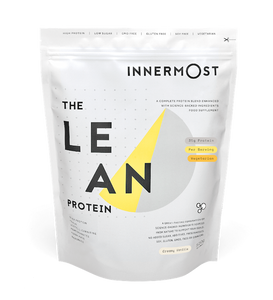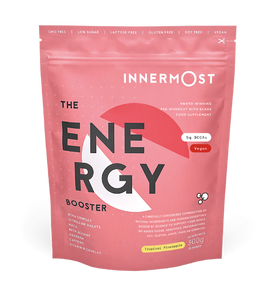If working out what kind of exercise routine or fitness goal you want to work towards wasn’t hard enough (what with all of the options, strategies and techniques), we’re sorry to break it to you, but to ensure that your recovery is effective and you keep yourself in tip-top condition to maximise your performance, you need to make sure that you’re taking care of yourself with a proper recovery technique, too.
Whilst this could sound pretty daunting (or, if you’re somebody that hates warming down even though you know it’s a necessity) boring, it’s actually a really exciting opportunity to make sure that you’re making the most of your fitness routine.
Whatever recovery routine you decide to pursue, whether it’s active or passive, one thing’s for sure: make sure you’re incorporating The Recover Capsules for the best results. And whilst there’s a huge range of recovery strategies that you can pick and choose from, today we’re talking about active recovery, and running you through some of our favourite active recovery exercises.
What is active recovery?
Active recovery basically describes the technique of recovery through activity. If you’re not sure what recovery through activity means, this refers to the strategy of incorporating a low-level, low intensity workout that follows a particularly strenuous workout or HIIT.
The idea behind active recovery is that this method of post-workout recovery is generally considered more effective than immediate rest (i.e, warming down gently is a lot better for you than plonking your bum down on the sofa immediately). Shame that, really.
This is because by immediately returning to rest, your body is more likely to cease up, with muscles becoming stiff and tight. By immediately entering active recovery (rather than a state of passive recovery… but more on that, later), you are keeping the muscles moving, ensuring that
Active vs passive recovery
If you’re ultra-attentive, you may have noticed that we just mentioned something called passive recovery. Good spot!
As we’ve said, when it comes to recovery techniques, there are a few that you can choose from, but in the fitness world, one of the biggest debates is around active vs passive recovery.
Whilst active recovery describes the method of getting (or rather, keeping) yourself moving after a workout, passive recovery is the complete opposite, and is pretty easy really, as it requires no movement at all.
Whilst initially this sounds pretty lazy, passive recovery is effective in the case of notable injuries (you know, like a broken bone or a strained tendon or ligament), so don’t write off the technique straight away. We just don’t recommend it if you’re trying to find a healthy way to recover and reduce soreness.
Our favourite active recovery exercises
The best thing about active recovery is that you can incorporate the technique really, really easily into your everyday life. We’re more than aware that everyone leads a very busy lifestyle, and some days, an extra twenty-minutes in the gym purely to warm down seems like time that you just don’t have to spare.
So, in order to make sure you can incorporate active recovery into your workout routine every single time you workout, consider perhaps walking or cycling to the gym, taking the stairs back to the showers, or incorporating any type of movement into whatever you’re doing next.
That call you urgently have to take after your gym class? Why not go on a walk whilst taking it. See how easy it can be?
Some great active recovery exercises include:
- Running
- Jogging
- Walking
- Cycling
- Swimming
- Yoga
- Massages
Summary
When you’re feeling sore (or, if you’re reading this pre-workout, and want to avoid feeling sore), definitely start engaging in the active recovery techniques listed above. It’s important to be able to read your body, though.
If you’re feeling a little sore after a particularly heavy leg day, it’s definitely time to take a quick stroll around the block and get that blood flow going. On the other hand, though, if you’re in so much pain that you can’t really walk, or struggle to put any weight on a particular area, you should most probably be engaging in a more passive technique.
Most of all, remember to warm up and warm down… every single time. Take care of yourselves, take your recovery seriously, and keep up the good work, Innermo

















